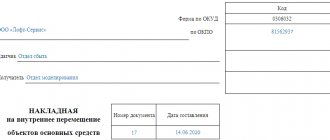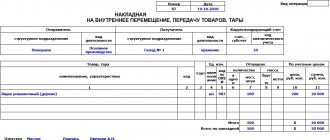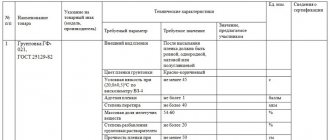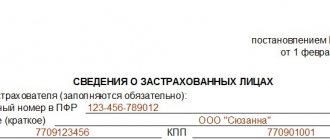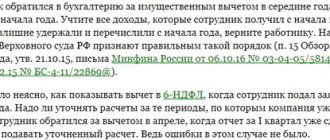Form OS-2. Invoice for internal movement of fixed assets
When transferring property related to fixed assets within one organization, for example, from one division to another, it is necessary to fill out an invoice for the internal movement of fixed assets in the OS-2 form.
To obtain a completed completed OS-2, as well as a blank version, follow the link at the end of the page.
It is necessary to draw up a separate invoice form OS-2 for each fixed asset item that is moved within the departments and structural units of one organization. The employee who is directly involved in the transfer of an object to another department is responsible for completing the OS-2 form.
The invoice form OS-2 must be filled out in triplicate. The first copy is signed by the party who accepts the property. It is intended for the financially responsible person who made the transfer. The representative of the party that accepts the fixed asset also receives its own version of the invoice in the OS-2 form with verification from the transferring party. The employee who will enter the necessary information for the OS-6 inventory card must take the third copy of the invoice, with the signatures of both parties, to the accounting department.
What is the OS-2 form intended for?
An invoice in the OS-2 form is issued at the site from which the internal movement of fixed assets is carried out. The information contained in this invoice is subsequently used to fill out the inventory book (forms OS-6, OS-6a and OS-6b) or a card issued for this transported object.
Read about the design of these forms in the articles:
- “Unified form No. OS-6 - form and sample”;
- “Unified form No. OS-6a - form and sample”;
- “Unified form No. OS-6b - form and sample.”
Form OS-2. Filling out an invoice for internal movement of fixed assets
| ★ Best-selling book “Accounting from scratch” for dummies (understand how to do accounting in 72 hours) > 8,000 books purchased |
Both sides of the OS-2 form must be filled out. The front side of the OS-2 form must contain the full name of the organization that owns the fixed asset; the structural units and their full names that take part in the transfer are immediately indicated.
On the OS-2 invoice form, the date of the transfer is indicated and it receives a serial number.
The name of the fixed asset item that is subject to movement between departments is indicated in the table. They immediately enter data regarding the date when it was purchased (produced or built), the number of such objects, as well as their price. Below, below the table, general information about the status of the fixed asset or assets involved in the transfer process is briefly listed.
When the invoice form in form OS-2 is completely filled out, representatives of both parties sign it. The representative of each party enters information about the position held, personnel number, full name, signature, date. After the accountant makes a mark on the inventory card, he signs the invoice at the bottom of the form.
The procedure for completing the OS-2 form
The invoice in form OS-2 is issued in 3 copies, one of which is intended for the accounting service, the second remains with the person responsible for the safety of the moved object, and the third is issued for the recipient of the property.
Each copy of the invoice for the movement of assets (OS) within the company must be signed by the deliverer and the recipient, who are financially responsible for the property.
In accordance with the Law “On Accounting” dated 06.122011 No. 402-FZ, since 2013, unified forms, including the OS-2 invoice, are no longer mandatory for use - they are only recommended for use. This means that each company can develop its own form based on the OS-2 form.
Filling algorithm
The invoice is filled out on both sides. It consists of a header on the title side, a table of seven columns that continues on the reverse side, as well as a place for a brief description of the transferred object and signatures of the responsible persons.
In the upper right corner of the title part of the document there is a link to the Decree of the State Statistics Committee of 2003, which approved this form as mandatory. After 10 years, it became a recommendation, but its use continues.
At the top of the invoice, the OKUD and OKPO forms and the name of the company within which the movement takes place are indicated. The unit from which the object is being withdrawn is indicated first (it is called the “delivery”). The recipient department is indicated below.
Attention! The invoice must be filled out by the delivery department.
After the names of the departments, the name of the document, the date of preparation of the paper and the assigned number are written.
Below is a table with:
- number;
- a description that includes the date of manufacture (or construction), full name, inventory number;
- number of transferred objects in pieces;
- cost;
- results.
After the table, space is left to describe the object, its technical and other characteristics. When filling out, these lines cannot be left blank.
You can mention the condition (good, excellent, satisfactory), existing defects (scuffs, chips, etc.), and describe the packaging. If warranty cards or instructions are included, these are also included.
At the end there should be signatures (deciphered) of the persons who made the delivery and acceptance. The fact that information about the movement was entered into the accounting book is confirmed by the chief accountant (or simply the accountant who carried out the data transfer).
Important! When putting signatures, mentioning the positions of persons is mandatory.
Nuances of filling
Rows in the table should not be left empty. If a document is generated electronically, then unfilled sections of the document are simply deleted. If the paper is already printed, they are crossed out. Corrections to the invoice are not recommended. But if a mistake was made, it is corrected by a longitudinal strikethrough and the inscription “Believe the corrected one.” Moreover, next to this inscription there must be signatures of all persons who are also signed at the end of the document: the chief accountant, the handing over and receiving persons.
Is it possible to change graphs?
All this data is necessary for maintaining full-fledged accounting and warehouse records in the organization. Since 2013, this form has ceased to be mandatory. It became only advisory, in accordance with the law “On Accounting” dated 06.12.2011 No. 402-FZ.
At its own discretion, the organization has the right to refuse some columns of the primary document or add new ones. However, all these changes must be documented and have good reasons.
In short, the form is widely used today because it is convenient, illustrates the maximum amount of information and does not confuse regulatory authorities when conducting inspections and audits.
How many copies will be required?
The invoice must be filled out in at least 3 identical copies. This is done so that one invoice remains with the accountant (or the employee performing his duties) for the generation of further reporting. The second paper must be kept by the employee responsible for it for a specific facility. And the third option must be provided to the receiving party as confirmation of the verified fact. Ideally, all 3 invoices have 3 signatures of employees who are financially responsible.
Control
If during the inspection it is discovered that the object is under the jurisdiction of one division, but is registered with another, then the organization will face administrative liability in the form of a fine.
If a violation is detected for the first time and it does not lead to an understatement of taxes, then the company can get off with a fine of 5 thousand rubles.
If during the audit it is discovered that there is no invoice for the movement of fixed assets, form OS-2, and this fact will underestimate the taxes due from the organization, then less than 15 thousand rubles. There is no penalty for such a violation. Moreover, an amount of 10% of the total tax not paid for this reason may be assigned (but this amount will still not be less than 15 thousand rubles).
Using the OS-2 form, an invoice is filled out for the internal movement of fixed assets - for example, from one division of the company to another. The unified form of the OS-2 form was approved by Decree of the State Statistics Committee of January 21, 2003 No. 7. You are not obliged to use only unified forms - since 2013, enterprises have the right to develop their own forms of documents. The main thing is that the documents you develop contain all the required details. If you decide to develop the form yourself, you can use the OS-2 form as a sample to fill out, shortening the form or vice versa, adding the necessary details to it.
Invoice for internal movement of fixed assets
In what case might you need to register the transfer of a fixed asset? For example, you decide to repair or reconstruct a fixed asset yourself and for this you need to move the object to another premises.
In this case, you will need to complete the following documents:
- draw up a report on the defects that were identified in fixed assets;
- the manager must issue an order to eliminate the detected malfunctions;
- To register the move, fill out an invoice for internal movement.
Some people mistakenly believe that the gratuitous transfer of a fixed asset can be issued with an invoice in the OS-2 form, but this is not so. In this case, the transfer of a fixed asset must be formalized by an act of acceptance and transfer of the object in the OS-1 form, an invoice in the OS-2 form is filled out by enterprises only for internal movement.
Information that a fixed asset item has been moved to another division of the organization must also be included in the documents that are filled out in the company to record the availability and movement of fixed assets. The role of such a document can be, for example, an inventory card for recording fixed assets according to the unified form No. OS-6, if we are talking about a group of objects - a card for group accounting of fixed assets (form No. OS-6a), an inventory book for accounting for fixed assets ( Form No. OS-6b).
Invoice for internal movement: when to prepare and in what form
Internal movement of inventory items (raw materials, supplies, goods, products, fixed assets, etc.), like any other business operation, is documented with a primary accounting document (PUD). Usually independently developed. For example, an invoice for internal movement. Let's consider when you can use this document and in what form it should be compiled.
What is considered internal displacement?
Regarding which movement of assets is internal, the legislation <*> gives the following answer.
Internal movement is the movement of inventory items (materials, goods, finished products, etc.) within an organization for its own needs. And it has nothing to do with the sale (transfer) of assets to third-party business entities and persons. Such a movement can be carried out:
— between various structural divisions of the organization;
— places of activity of the organization (places of storage, operation, production, use, sales, production, procurement);
— employees of the organization who are financially responsible (responsible) persons (MOL).
In other words, this is the movement of inventory items both between divisions (MOL) within the plant’s territory, and to divisions located on another territory or in another area.
Such a movement must be formalized by the PUD <*>. Let's find out what kind of document this could be.
How to process internal movement and when you can create an invoice for internal movement
Internal movement can be documented either with standard invoices or with a document of your own design. To understand which document to draw up in a particular situation, you need to clarify the following points:
— whether hired vehicles are used when moving. If yes, then a standard form of TTN must be drawn up. Moreover, it does not matter how far the car travels and whether it leaves the organization. This is due to the fact that the carrier needs a standard invoice here to account for transport work. For example, when transportation of products from branch to branch is carried out by a third-party carrier. Or if a third-party transport company transports equipment from one workshop to another located nearby, and the movement takes place only within the territory of the organization <*>.
If the organization does not hire third-party vehicles for internal movement, various registration options are possible;
— if internal movement is carried out by your own vehicles, does it go on public roads during the movement? These include roads intended for use by any person, taking into account the requirements established by Belarusian legislation. As a rule, these are roads located outside the in-plant territory <*>.
In a situation where such a departure takes place, it is mandatory to issue a TTN. This need arises when they transport raw materials from a warehouse to a production workshop located in another part of the city, or move goods from a warehouse in one city to a company store in another, etc. <*>.
If the departure does not occur, i.e. the movement is carried out within the territory of the organization, you can draw up a document of your own design. It is applicable, for example, if an auxiliary motor transport unit transports goods from the warehouse of one workshop to the warehouse of another across the organization’s territory;
— if goods and materials are moved without the participation of a vehicle (for example, on a forklift, trolley, manually), is there access to public lands (streets, avenues, squares, driveways, embankments, boulevards, squares, parks, etc.)? If this happens, then a TN must be drawn up. For example, when sending inventory items by mail or courier service to another division of the organization. Or in the case of transporting raw materials on a forklift, when the forklift moves part of the road outside the territory of the organization through public areas <*>.
Without such a departure, i.e. when moving within the organization’s territory, you can get by with a document of your own design.
For clarity, we present the document selection algorithm in the form of a diagram:
Thus, the organization has the right to formalize internal movement, during which a third-party carrier is not involved and there is no travel on public roads or access to public lands, with independently developed and approved DMPs. For example, invoices for internal movement, invoice requirements, requirements, etc. It is important that they contain all the required details <*>.
Note to agricultural organizations Agricultural organizations have the right to internally move such goods and materials as fuel, spare parts, repair and construction materials, seeds, planting material, mineral fertilizers, grain, vegetables, fruits and other materials, in some cases, use not only generally applicable forms of PUD, but also special industry ones. Thus, these organizations are allowed not to use standard invoices for internal movement, even outside the territory with access to public roads (access to public lands), but only if the movement is formalized by a limit-fence card, a demand-invoice, or a grain dispatch register and other products from the field according to established forms <*>.
So, we found out that under certain conditions, an organization has the right to formalize the internal movement of assets with a document of its own design. In this regard, another question may arise. Will it be one document for all cases of movement of assets within the organization or several different ones for different purposes ? The choice in this case is up to the organization, i.e. it makes its own decisions based on the characteristics of its activities and internal organizational and accounting processes.
As a rule, larger enterprises use different documents for different purposes of internal asset transfer. This is more convenient, since along with the movement of valuables, another economic operation can also take place. Thus, when moving manufactured products from production to a warehouse, not only movement occurs, but also the release of finished products. And for this operation, acceptance notes or acts, statements of delivery of finished products, etc. are more acceptable. Or, for example, when transferring raw materials to a workshop, in addition to movement, they may also reflect the fact of write-off. And it is more convenient to do this, for example, in a demand-invoice or a limit-fence card <*>. Large enterprises usually resort to invoices for internal movement when it is necessary to formalize the movement of goods and materials between storage places, storerooms or shopping centers <*>.
Smaller organizations or those with a small number of transactions may use one document, the internal movement invoice, for all or most intra-organization asset movements. But it must contain the attribute “Base of movement” or “Purpose of movement” so that the fact of movement can be correctly reflected in accounting <*>.
Next in ilex, we’ll look at what form an invoice for internal movement can take, as well as examples of how to fill it out in various situations
Unified form OS-2. Sample filling.
The invoice for internal movement OS-2 is filled out in 3 copies, one of which is kept by the person who completed the movement, the second is intended for the receiving party, and the third must be transferred to the accounting department.
In the header of the form on the front side of the invoice for internal movement, fill in the name of the organization, the deliverer and receiver of fixed assets, the form code according to OKUD, the code according to OKPO, the document number and the date of its preparation.
The main part of the OS-2 act consists of a table that contains 7 columns:
- OS number in order;
- OS object name;
- date of purchase;
- inventory number;
- number of objects;
- unit cost;
- cost of everything.
Below the table there are lines to characterize the technical condition of the object. Next come the signatures of the person handing over and receiving the object: position, signature and transcript of the signature, personnel number, date. The unified form OS-2 is signed by the chief accountant.
In order to quickly and without errors fill out the invoice according to form OS-2, download and study the sample filling:
invoice for internal movement:
How to fill?
The legislation provides for a special unified form of invoice - OS-2.
Companies are not required to use this form. Organizations are allowed to independently develop the form of primary documentation.
However, they must be documented and contain mandatory clauses for such documentation.
Required details:
- document's name;
- date of registration;
- Company name;
- designation of the fixed asset;
- the fact of moving the OS within the organization and the number of units;
- designation of responsible persons;
- signatures of all parties involved in the transfer.
When developing an individual form, the company must consolidate it in its accounting policies.
When choosing a unified form OS-2, it is recommended to adhere to the basic rules for filling out the document:
The header states:
- information about from which and to which division of the organization the object is being moved. The deliverer and the receiving party are also indicated with their position and full name;
- number and date;
- document's name;
- basis for compilation;
- details of the basis document for the movement (order).
The main part of the invoice contains a table containing seven columns:
- No. of the fixed asset in order;
- name of property;
- date of purchase of the OS;
- inventory number;
- number of objects to be moved;
- unit cost;
- the full value of the property being moved.
Below the table there are lines about the technical condition of the OS and its brief description is written.
Here the actual condition and the possibility of using the fixed asset for its intended purpose must be indicated.
Next, the visas of the receiving and transmitting parties are affixed: signature, position, transcript, personnel number and date. Form OS-2 is signed by the chief accountant of the company.
The invoice is prepared in the amount of 3 pieces:
- For accounting;
- the recipient of the transferred fixed asset;
- the person responsible for the safety of the object.
It is recommended to fill out the document without errors, clerical errors or corrections.
Information about the moved object is entered into the OS inventory card or other accounting document compiled to reflect the movement of objects in the enterprise. This is done by an accounting employee when an invoice is received.
Download the form and sample for free
unified form OS-2 – excel.
filling out the invoice for movement within the organization OS-2 - excel.
conclusions
There are several main points on this topic:
- When moving fixed assets within an enterprise, a special invoice must be issued.
- The form is filled out by the responsible employee transferring the party’s object.
- Both parties (sending and receiving) sign the form. The chief accountant of the organization also affixes his visa.
- After the object is transferred, one copy is transferred to the accounting department.
- There is a unified form OS-2. However, employers are under no obligation to use it. It is allowed to develop individual forms in the company with their prior approval.
- Issued in the amount of 3 pieces: for both parties (receiving and transmitting parties) and accounting department.
- Errors and corrections in such primary documentation are not allowed.
- Information from the OS-2 form is entered into an inventory card or other similar company document.
Why do you need the TORG-13 form?
This invoice is important for the enterprise, especially in the case when the movement process is carried out with the help of third-party forces transporting cargo from one structural unit to another.
The main purpose of the TORG-13 consignment note is to confirm the fact of departure of goods or containers from one place and their arrival in another place. A correctly drawn up and certified form allows you to carry out the write-off and capitalization procedure in accounting.
In addition, the invoice performs an additional function - it allows you to justify to the Federal Tax Service the costs of moving inventory or containers from one department to another, when additional forces are involved for this purpose - transport companies.
Costs can be caused by the process of loading, unloading, and transportation. To take these expenses into account when calculating income tax, you need a documentary justification, which will be the invoice for internal movement TORG-13.
Arbitration practice shows that an invoice, drawn up correctly and signed by representatives of the sender and recipient, can confirm the existence of expenses. Additionally, the invoice can be supported by such documents as an act of transport services provided, a transport expedition agreement, and a waybill.
Accounting: expenses for internal movement during reconstruction
When internally moving fixed assets, an organization may incur expenses. For example, transportation costs, costs for dismantling and installing equipment, etc. The procedure for accounting for these costs depends on whether the movement of a fixed asset is associated with its reconstruction (modernization, additional equipment).
If a fixed asset is transferred from one division of the organization to another as part of reconstruction (modernization, additional equipment), then the costs of the transfer are taken into account in account 08 “Investments in non-current assets”:
Debit 08 Credit 60 (10, 70, 68, 69...) – expenses associated with the internal movement of fixed assets for reconstruction (modernization, additional equipment) are taken into account.
After completion of reconstruction work (modernization, additional equipment), expenses associated with internal movement are included in the initial cost of the fixed asset:
Debit 01 (03) Credit 08 – the initial cost of a fixed asset has been increased by the amount of costs associated with its movement for reconstruction (modernization, additional equipment).
This procedure for reflecting expenses for the internal movement of a fixed asset in connection with its reconstruction, modernization or additional equipment follows from paragraph 42 of the Methodological Instructions approved by Order of the Ministry of Finance of Russia dated October 13, 2003 No. 91n.
Recommendations for filling out TORG-13
The standard invoice form for the internal movement of goods was put into effect by Resolution of the State Statistics Committee No. 132 of December 25, 1998. Since the beginning of 2013 organizations are not obliged to strictly use standard primary forms; companies have the right to choose a convenient type of accounting document themselves.
If the enterprise is not satisfied with the unified form, then its own form can be developed. For development, you can use a standard form, supplementing it with necessary information.
For example, in the unified TORG-13 form there are no fields for indicating the addresses of structural units, and this can be important in the process of transporting goods and containers between them. In this case, the invoice form for internal movement can be supplemented with such a field.
The TORG-13 consignment note should indicate the name of the legal entity within which the cargo is being moved. The code of the main activity of this enterprise is also entered. The invoice is assigned a personal unique number; numbers should not be repeated within the same reporting period. The day the document was issued is indicated next to the number.
The following is information about the parties involved and the corresponding accounts:
- The name of the structural unit sending the goods and the direction of its activity;
- The name of the structural unit receiving the materials and the type of its activity;
- The number of the accounting account where the goods are sent (if analytical accounting is maintained for this account, then the corresponding code is indicated).
The table contains data on those items of inventories that are subject to internal movement between financially responsible persons:
| Column number | Procedure for filling out the column |
| 1 | Name of the valuables being moved (goods, semi-finished products, raw materials, containers). The main characteristics of the MPZ are also given. |
Errors in filling out the TORG-13 invoice
An invoice for internal movement is a primary accounting document that allows you to:
- The accountant must make an entry for writing off inventories from one structural unit and accepting them for accounting in another unit.
- Justify before the Federal Tax Service the legality of accepting transfer expenses to reduce taxable profit when calculating income tax.
That is, the TORG-13 form performs important functions, and therefore errors in filling out the invoice are not allowed. First of all, it is necessary to provide a clear list of the goods being moved; there should be no errors in indicating the names, quantities, and costs.
The date of the transaction for the transfer of valuables between MOLs must be indicated. An invoice that is not certified by the sending and receiving parties will not allow the document to fulfill its purpose. That is, the uncertified TORG-13 form will be compiled with an error.
The signatures confirm that the internal displacement operation has been completed. The representative of the receiving party needs to sign only after the actual quantity and documentary data have been compared. By signing the TORG-13 form, the recipient confirms that he has accepted the amount of valuables stated in the invoice.
It would be a mistake to fill out the TORG-13 invoice regarding the movement of goods to another legal entity or individual entrepreneur. This form is intended exclusively for internal movements, when the transferred inventories remain in the organization, only their location changes.
What is an Internal Move Invoice?
This is a document that records the movement of products or material assets within one legal entity; depending on the type of objects being moved, unified document forms TORG-13 or OS-2 are used.
This document is evidence of the movement of values within the enterprise between structural units, departments, workshops or responsible persons. Also, this information about the movement is entered into special production documentation, which additionally records the disposal of property in one workshop and its arrival in another.
The invoice is used at the time of transfer of the object, according to this document, one party hands over the object, and the other accepts it; after the event, the document is submitted to the accounting department to make the appropriate entries in the reporting and record the movement.
You will learn how to perform an internal move from one warehouse to another in this video:
Important: the TORG-13 consignment note form is also used when transporting enterprise cargo by company vehicles and when returning goods by customers in retail trade.
Therefore, this document, despite its modest design, is of great importance for accounting and preparing reports to the tax authorities.
Internal movement - what is it?
The movement of materials, objects and papers within an organization is called internal movement; such movement is carried out by order of management between structural units or from one responsible person to another.
The movement of any material assets within the enterprise is recorded with certain documentation, and if objects of any nature are moved, an invoice in the form TORG-13 is used, and when moving fixed assets, which often happens, an invoice OS-2 is used.
Such an action can be caused by any internal need of the organization, for example, the reorganization of one of the workshops or the transfer of an object that is not needed in one of the departments, in the production of goods consisting of several elements, their movement between workshops, etc.
Types of movements
A wide variety of goods can be transferred within an organization; therefore, various forms of documentation are used to record this moment.
In addition to the two main documents for the movement of ordinary goods TORG-13 and fixed assets OS-2, there are several more:
- When moving small items intended for sale in street kiosks and stalls - TORG-14;
- M-11 – invoice demand, used when for some reason the objects were not transferred upon request, or if they have defects, breakdowns, or are a consequence of the disassembly of one of the objects.
Each document is generated in accordance with the requirements for its completion and contains the required number of copies. You will learn what an act of acceptance and transfer of goods is and how to draw it up correctly by following the link.
When is the document drawn up?
The document is drawn up at the time of the immediate transfer of the object from one hand to another or before the upcoming transfer, and all participants in the process must sign it.
Form and details of the invoice
Each invoice is drawn up in accordance with the requirements of the law, however, there are details that must be present in each document:
- Name of the organization and number of the structural unit transferring the value or full name of the responsible person. you will learn how to correctly draw up an act of acceptance and transfer of material assets;
- Company details;
- Date and place of compilation;
- Name and number of the document;
- The basis for its compilation;
- Information about the object - name, quantity, cost of one unit and total cost;
- Signatures of persons are required; without this, the document is not valid.
Sample invoice for internal movement of goods.
Features of each form
As already mentioned, each form has its own characteristics:
- Form TORG-13 contains the following data:
- Name of the enterprise and its details;
- Formation date;
- The invoice number is indicated;
- Next is filling out a table in which you should enter information about the parties transferring and receiving the goods, information about the product - name, quantity, cost of one copy and general;
- Signatures of the parties.
- Form OS-2 is filled out on both sides and contains the following data:
- The front side is used as a header, as it contains basic information about the persons transferring funds;
- After which the date of preparation and document number are indicated;
- Next comes filling out a table in which you should indicate the name of the object, production date, inventory number, quantity of funds and price;
- Under the table you should indicate the general characteristics of the objects - their technical condition, the presence of defects and breakdowns, and make a unique description of the object.
Important: after drawing up the document, it must be checked for correctness and signed by all participants and the production accountant.
What are the rules for filling out a consignment note in the TORG-12 form - read.
Step-by-step filling instructions
This documentation, according to the features of the forms, also has features for filling out:
- When creating a document for the transfer of fixed assets, it is necessary to make 3 copies:
- The first remains with the transferring party to write off funds from the balance. You can find out what an order to write off fixed assets is and how to draw it up by following the link;
- The second is transferred to the receiving workshop for registering the object;
- The third one will go to the author of the document; it is this copy that bears the signatures of all participants, including the accountant.
- The TORG-13 invoice is available in a simpler filling option and is generated only in 2 copies:
- It is used when transferring materials, goods or containers and during transportation by road;
- This form can be used when transferring property between any kind of financially responsible persons or departments of various ranks;
- This document is drawn up by the responsible party for the object and serves as a guarantee that the transfer has occurred.
Important: when generating these documents, you must remember that the use of unified forms is mandatory, so any of the necessary forms can be adjusted to the specifics of the organization.
Invoice form in the form TORG-13.
